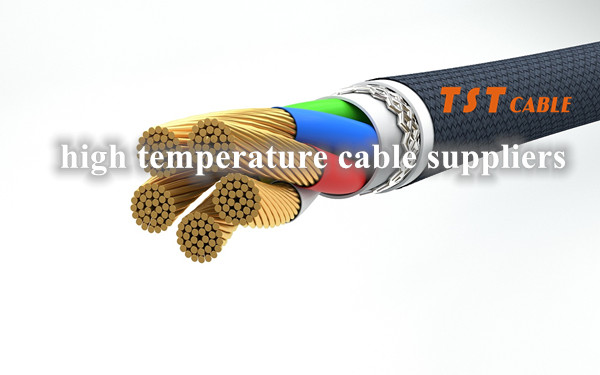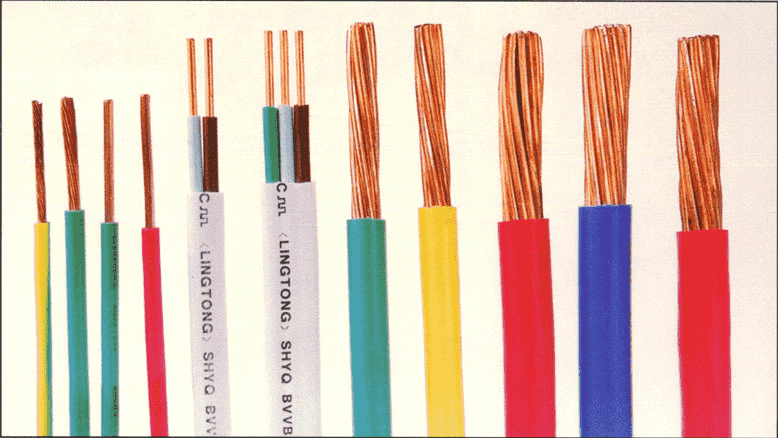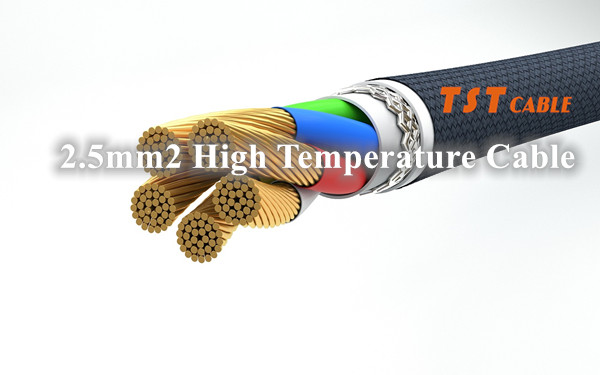2 core high temperature cable 2.5 mm2 Overview of AFR-250 AFRP-250 AF4
PTFE film-wrapped insulated mounting wire adopts PTFE film as insulation and is produced in accordance with the enterprise standard.AFR-250 AFRP-250 AF4 high-temperature-resistant wire has the advantages of flexibility, high-temperature-resistant performance, excellent chemical performance, low smoke and halogen-free, corrosion-resistant, oil-resistant, aging-resistant, moisture-resistant, and flame-retardant, etc. It is mainly used for electronic equipment, instrumentation lines, aircraft wiring and other electrical devices under high temperature conditions, internal connections. Mainly used for high temperature conditions of electronic equipment, instrumentation lines, aircraft wiring and other electrical devices such as internal connections.

The main performance of the product
1. Rated voltage: AC 220V
2. Operating temperature: -65℃ ~ 200℃ -65℃ ~ 250℃ (silver-plated conductor)
3. Insulation resistance: finished wire at room temperature should not be less than 100MΩ-km
4. Shield braiding density should be not less than 80%, can be delivered more than 3 meters.
Fluoroplastics Cable, English name: Fluoroplastics Cable, used to specifically refer to fluoroplastics as the coat of the wire and cable. Fluoroplastic cable has excellent weather resistance, heat resistance, low coefficient of friction, stable chemical properties, and good electrical insulation properties. Therefore, fluorine plastic cables have important uses in petroleum, metallurgy, chemical, electric power, and other industries with harsh environments. In the production of wires and cables, commonly used fluoroplastics are polytetrafluoroethylene, polyperfluoroethylene propylene, poly, tetrafluoroethylene and ethylene copolymers, etc., used in the manufacture of a variety of heat-resistant, high-temperature insulated wires, measurement (oil) well cable, geological exploration cable, heating cable, F-class and H-class motor lead wires, irradiation-resistant wires, electromagnetic wires, radio-frequency coaxial cables, fire-retardant cables in coal mines with the A-type cable, and so on.
TSTCABLES Three common 2.5 mm2 high-temperature resistant cable forms: single-core cable, coaxial cable, multi-core cable.
1, single-core cable
Or called high-temperature wire, its structure is the inner conductor for a single or multi-stranded copper wire (tinned copper wire), conductor outer diameter 0.4 ~ 2.0MM, insulation for fluoroplastic, insulation thickness of 0.3 ~ 0.5MM, commonly used as aviation wire, electronic and electrical equipment wiring and special occasions, lighting line.
2、Coaxial Cable
The inner conductor is single or multi-stranded copper lead (tinned copper-silver copper wire), with a diameter of 1.25~1.6MM, and there are three types of insulation: A, fluorine plastic insulation, with a thickness of 0.5~0.7MM, B, fluorine plastic foam insulation, with a thickness of 2.5~3.0MM, and C, fluorine plastic and polyethylene combined insulation, i.e., fluorine plastic insulation for the inner layer, and polyethylene for the outer layer, with the thickness of fluorine plastic being C. Fluorine plastic and polyethylene combination of insulation, that is, the inner layer of fluorine plastic insulation, outer layer of polyethylene insulation, where the thickness of fluorine plastic is 0.04 ~ 0.07MM.
3、Multi-core cable
TSTCABLES will be a single-core wire or coaxial cable stranded together to facilitate the multi-core cable. Among them are stranded, there are also non-stranded, respectively, used for industrial computer control and automated instrumentation and instrumentation control, for special occasions, Category 5, Category 5 cables, data transmission, audio-video transmission, etc., but also the use of this fluoropolymer cable.





